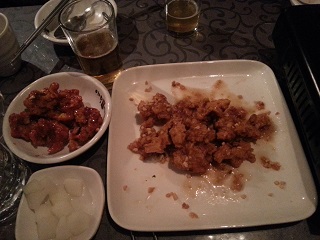Facts About Chimaek
Chimaek, a delectable South Korean pairing of fried chicken and beer, has become a cherished evening indulgence at numerous restaurants, including specialized chains nationwide.
The origins of chimaek can be traced back to the 1960s when roasted chicken began to gain popularity in South Korea. The introduction of spicy chicken dishes tailored to Korean palates, coupled with the rise of draft beer in the 1970s, fostered the fusion of fried chicken and beer as a unified menu item. This combination garnered significant attention during the 2002 Korea-Japan World Cup, solidifying its place in Korean drinking culture. Today, fried chicken is one of Korea's favorite dishes, even earning the nickname "Chi-neunim" a play on "chicken" and the Korean word for "God."
Fried chicken likely found its way to Korea in the early 1960s, influenced by the U.S. military presence. The availability of cooking oil in 1971 made it easier to prepare and enjoy chicken, eventually leading to the chimaek pairing. Brands like Rims Chicken, established in 1977, further bolstered its popularity.
The 2002 Korea-Japan World Cup was a watershed moment for chimaek. Public gatherings to watch the matches frequently featured chicken and beer, resulting in a surge of chicken restaurants across Korea. Today, chimaek festivals are held throughout the country, with events like the Seoul Chimaek Festival promoting Korean food culture on an international scale.
Chimaek has also gained fans outside Korea, particularly in China, thanks to the popular drama "My Love From the Star." This trend has spurred a boom in specialty chicken shops in China, with social media abuzz about the chimaek experience.
Bonchon Chicken is one of the renowned chimaek chains that has expanded globally. The demand for specialty chicken shops is on the rise, and as of March 2014, approximately 10% of the 192 chicken franchise companies in Korea offered unique recipes.
The chimaek trend has also inspired novel combinations like chibap, which pairs savory chicken with warm rice, adding further variety to the culinary landscape influenced by chimaek.

 North Korea
North Korea